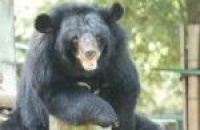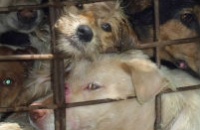Removing "human-inflicted" pain from rescued bears
03 May 2016
Pippin, Tai Tan and Eclipse were all rescued from bear bile farms. Vet Sheridan Lathe describes the ailments they suffer and how they are treated as they grow old in their sanctuary.
Although there are still an estimated 10,000 bears held in bile farms throughout China, it is a wonderful feeling to know the bears we have rescued are free from pain, disease and hunger. They are also ambassadors to show the world that bears have feelings, personalities and can live a happy life, free of this cruel practice. The bears at the sanctuary have sponsors from all over the world and we post photos on social media of them playing, swimming, eating and sleeping, spreading the message that there will be a day when bear bile farming is ended.
As one of the resident veterinarians at the Chengdu Bear Rescue Centre, my main focus is on the physical and psychological health of the bears we have rescued from farms around China. We currently manage 118 bears at the sanctuary and another 123 at a former bear farm in the Guanxi province.
The management of a captive population of this size keeps our vet and bear team busy and is very different from being a small animal veterinarian. We are managing an ageing population with many human-inflicted health problems that come from the years they spent in a tiny cage with poor nutrition, getting their bile harvested.
As examples of the work we do, I’d like to share the stories of three bears: Pippin, Tai Tan and Eclipse.
Read the full article at the Australian Veterinary Website.
BACK




 Healing the hidden wounds
Healing the hidden wounds
 Early summer awakening at the China Bear Rescue Centre
Early summer awakening at the China Bear Rescue Centre
 5 reasons the dog meat trade must end
5 reasons the dog meat trade must end